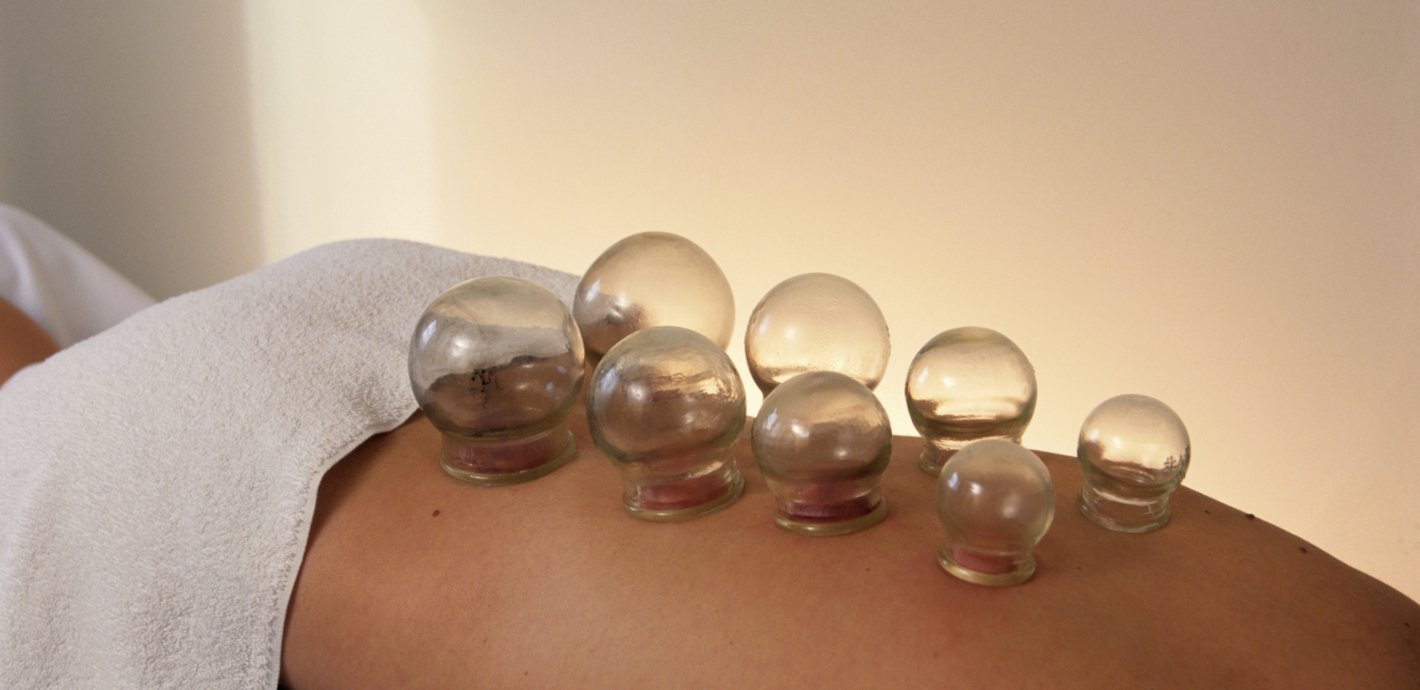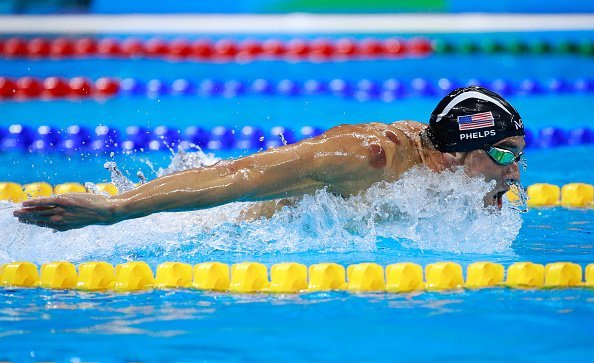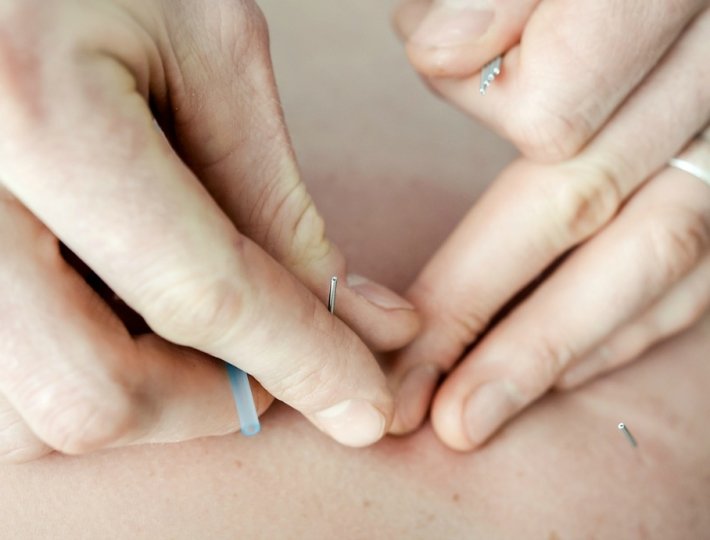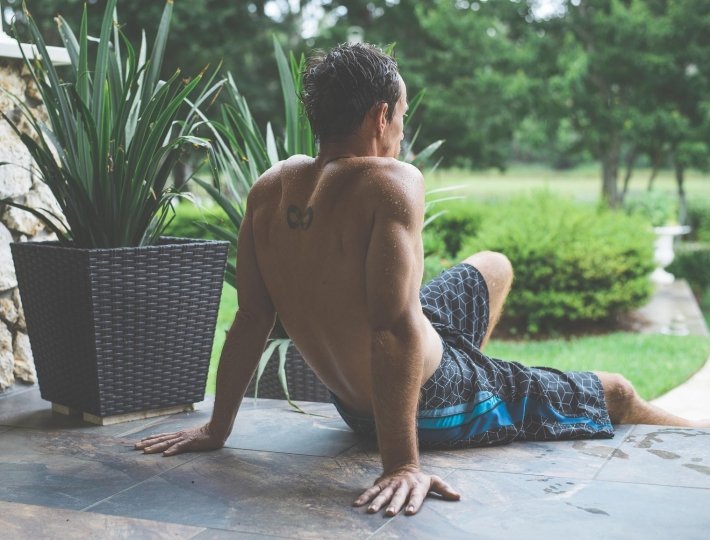Since round red bruises started showing up on the bodies of Olympic athletes in Rio de Janeiro, the traditional Chinese medicine therapy known as cupping has been in the spotlight again—after thousands of years of continual use around the world. While Western scientists have not yet been able to definitively prove its efficacy, the practice appears to be working for Michael Phelps, who was sporting the circular bruises when he won gold in the men’s 4-by-100-meter freestyle on Sunday, as well as the 4-by-200-meter freestyle relay and the highly anticipated individual 200-meter butterfly on Tuesday. U.S. gymnast Alex Naddour, American swimmer Natalie Coughlin, and Belarusian swimmer Pavel Sankovich are also among those who have turned to cupping in hopes of easing sore muscles and staying limber.
But it’s important to differentiate between the traditional Eastern practice of cupping and the use of cupping as a tool for myofascial release, says Carrie Gaerte, a doctor of physical therapy and certified athletic trainer with the Indianapolis-based St. Vincent Sports Performance (SVSP), which is staffing Proctor and Gamble’s Athlete Recovery Center in Rio during the Games. (Ralph Reiff, who was director of athlete care for the 1996 Olympics, is St. Vincent’s executive director, and SVSP has helped train 97 athletes on the U.S. gymnastics, track and field, and diving teams.)
“We’re not practicing the traditional Chinese form of cupping,” says Gaerte, who has been using the method for the last three years, and says about half of her clients these days want to try cupping. “We don’t support it as a cure-all—we’re using it as a tool for soft-tissue mobilization, like any other type of manual therapy. We’re able to identify myofascial restriction and release it, in an effort to reduce pain, free up movement, and help the body move more efficiently. What we’re doing is specific to musculoskeletal issues.”
In Eastern medicine, cupping is traditionally done along the body’s energy meridians to promote the flow of chi, with the goal of activating one’s natural healing abilities. Dating back to as early as 3000 BC, the practice was used by Egyptians and by Hippocrates in ancient Greece (according to the Ebers Papyrus, the oldest medical textbooks in the Western world) before spreading to China, where the Taoist alchemist and herbalist Ge Hong recorded its use around 300 AD. The method is fairly straightforward: Suction is created on the skin—traditionally through using flame to heat a glass, which is then placed on the body, creating a vacuum that sucks the skin up into the cup.
Related: What is Rolfing and How Does It Work?
These days, many practitioners use hand or electrical pumps attached to the cups, rather than heat, to create suction. The signature bruises are caused when the capillaries just below the surface rupture. (A variation known as “wet cupping,” which involves making a small cut in the area below the cup so the suction will draw out blood, is less popular among Westerners, for obvious reasons.) Gaerte and her colleagues at SVSP use silicone cups that don’t require pumping or heat to create a vacuum.
How does cupping work? Gaerte says the suction creates a rush of blood to the area that, for some people, seems to facilitate healing and release of tension—perhaps in part because of the warmth created by the increased blood flow, which helps to loosen the fascia. “There’s a lot that’s not known about it,” she says. “It’s not for everyone—some people find relief and some don’t.” Many of her clients swear by it, and she has found it to be helpful for people who have trouble tolerating more intense forms of manual therapy for myofascial release.
Scientists have had mixed results in validating the method. A 2012 review of 135 studies on cupping therapy concluded that it appears to be effective for various diseases and conditions (shingles, acne, facial paralysis, and arthritis in the neck were cited as responding particularly well to the practice) but warned that few of the studies met the standards necessary for unbiased research.
A 2013 study, comparing cupping to progressive muscle relaxation as a treatment for neck pain, indicated that the two techniques had about the same level of effectiveness—but those using cupping reported greater levels of well-being and less pain sensitivity. Another study, done on patients with osteoarthritis of the knee, showed a decrease in pain compared to a control group. Because it’s so difficult to set up double-blind studies—when you have a suction cup stuck to your body, you definitely notice it—researchers posit that the placebo effect might be in action with cupping. That’s also been suggested when professional athletes have turned to healing methods such as kinesio tape for stimulating blood circulation, cryotherapy for decreasing pain and inflammation, power bands to enhance balance, and aqua-titanium necklaces to reduce fatigue.
Related: The Magic of Dry Healing for Pain Relief
“There are not a lot of randomized controlled trials [on cupping] out there,” says Gaerte. “They’re challenging to carry out, because this isn’t a drug where you can control all the variables. Even touching someone [during cupping] can create a positive response in the body.” (Though it is possible to self-apply cups, Gaerte recommends that those interested in trying the method should begin by visiting either a Chinese medicine practitioner, sports medicine practice, or certified trainer who’s experienced with the process.)
But Gaerte wholeheartedly supports any benefit athletes might get from cupping, even if it’s all in their heads. “As long as it’s safe, with minimal risk, I see no reason not to try something,” she says. “If we can help somebody to perform optimally and realize their full potential, why wouldn’t we?”













Comments (0)